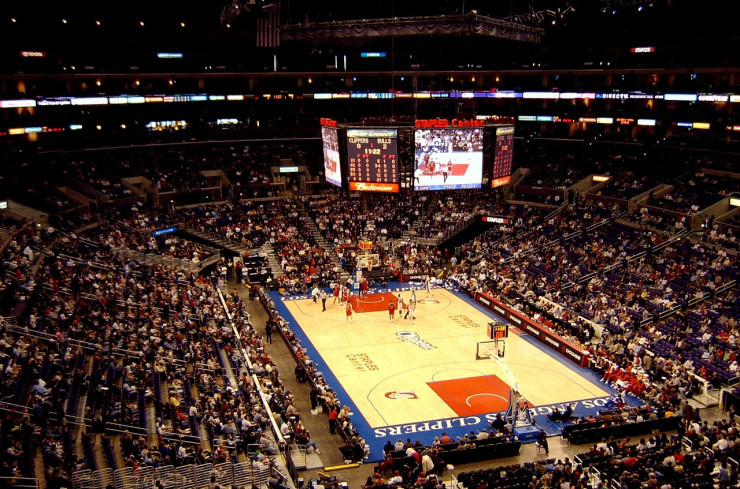Crass figures for gambling advertising during NHL and NBA broadcasts

Is there a problem with gambling advertising during live National Hockey League (NHL) and National Basketball Association (NBA) broadcasts in Canada? The University of Bristol conducted a study in collaboration with the Canadian Broadcasting Corporation (CBC). Some alarming facts came to light.
Gambling advertising is always a difficult topic: the authorities, addiction experts and politicians as well as our community regularly discuss whether advertising for casinos and sports betting should be further restricted, whether it is okay for sportspeople to advertise gambling so often or whether a betting provider is really a suitable sponsor for the European Football Championship?
A recently published study from Canada could add fuel to the debate - also in Germany. The constantly growing connection between sports betting and sport and its effects were very clearly defined as worrying by those responsible. Above all, the apparent normalisation of gambling would pose a great danger. In fact, every hour of news coverage examined contained an average of 13 minutes of gambling messages, according to co-researcher Dr Jamie Wheaton in the relevant press release.
The study by the University of Bristol produced some striking figures
The University of Bristol and the Canadian television company CBC scrutinised the activities surrounding gambling advertising during NHL and NBA TV broadcasts over a period of five days. This took place in the Ontario region. Specific social media posts were also analysed.
In the course of the seven matches analysed, there were 4,100 gambling-related messages. At 93.9 per cent, most of these messages were seen on the pitch or on other advertising spaces in the respective halls. The study recorded that gambling company logos or related messages were displayed for a whopping 21.6 per cent of the broadcast, which equates to one fifth of the entire programme. In the negative reference game, which was played in the NBA between the Toronto Raptors and the Chicago Bulls, 799 gambling messages were found.
Dr Jamie Wheaton, Research Associate at the University of Bristol, one of the lead researchers, said:
"The total duration of gambling messages shown on television averaged 39.8 minutes per match broadcast, including in-studio discussions. In other words, each hour of coverage contained an average of 13 minutes of gambling messages."
In contrast, only a fraction of three per cent dealt with warnings about dangers or ways to gamble safely and responsibly.
Advertising is particularly critical for children - stronger regulation is needed in response
The scientists from the University of Bristol clearly criticise the sheer volume of gambling advertising in their press release. This would make it practically impossible to avoid such content during NHL and NBA games. Viewers - and many children in particular - would be bombarded with highly visible logos. It is not uncommon for journalists and experts to even report specifically on sports betting in the TV studio.
All of this poses an increased "risk of normalising gambling as part of sports reporting". The considerable risks of sports betting or online casinos are hardly ever discussed.
Dr Raffaello Rossi, lecturer in marketing at the University of Bristol Business School, criticises in particular the uncritical behaviour of the presenters:
The inclusion of discussions about sports betting in the programme content is extremely problematic, as it further blurs the line between entertainment or reporting and marketing. This can create the impression that betting is a completely normal - and harmless - part of the sporting experience."
Sports betting markets were repeatedly presented during the programme. According to the university's press release, these appeared on the screen during the match commentary in the studio. The journalists and experts are even said to have discussed statistics on key players, which could then be used by viewers to optimise their bets on the matches. Those responsible for the study describe the current regulations as completely inadequate.
Dr Wheaton is unequivocal about the current rules and sees a need for action:
"We believe that the current regulations in Ontario are not able to effectively control the amount and format of gambling advertising in these sports. The regulations should go further to ensure that viewers are protected from excessive gambling advertising."
Dr Rossi adds in this vein:
"In contrast to mature regulations in countries where online gambling has been legal for years, Ontario's legal framework is still somewhat immature. This poses a major challenge as the gambling industry is part of a huge multinational co-operation with giants such as FanDuel, Betfair and Skybet, which have extensive experience in different jurisdictions."
Social media also in focus
The researchers not only looked at TV broadcasts, but also analysed what was happening on social media in this context. In fact, there was also a very high volume of gambling advertising there. Social media accounts of ten licensed gambling brands were analysed, with almost half of the ads (48 percent) not being clearly recognisable as advertising. This in turn violates an important provision of the Canadian Advertising Standards Code, according to the press statement.
Dr Rossi is very concerned:
"Our study highlights a serious problem with the marketing of gambling via social media, particularly with content marketing. There is an urgent need to tighten regulations to protect consumers - especially children, who are particularly vulnerable to such sophisticated advertising techniques."
Conclusion
Image source: https://pixabay.com/photos/basketball-arena-match-sport-game-1219099/

0 Comments to: Crass figures for gambling advertising during NHL and NBA broadcasts
write a commentOur community thrives on your feedback - so let us know what you think!
Would you like to write comments on GambleJoe yourself? Then just create a GambleJoe User Account.